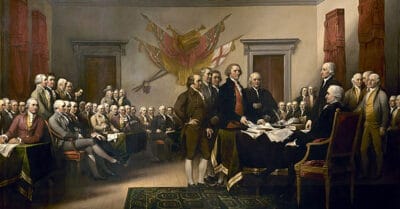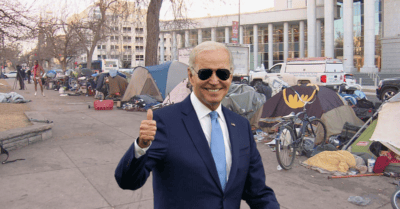The Climate Crisis, The Covid Crisis, The Currency Crisis. Crisis after crisis, amplified by the news and social media to instill fear, greed, vanity, and most of all stupidity into the airwaves and published in print and on screens. Real or imagined, the crisis we actually face is a cerebral crisis. A crisis relating to the brain or the intellect of the individual to think.
I have had the opportunity to mentor young people by focusing on their ability to speak in public. Once I was asked to work with a young, single working mom. She was taking college courses to better herself. She was intelligent, well spoken, and was always dressed in trendy clothing. Our meetings were focused on helping her become a more confident and polished speaker. We spent our first meeting getting to know each other and I asked her many questions to see where we could best focus our time and work on the skills she needed.
As we progressed, she told me her main goal was to give an oral presentation in one of her classes on the injustice white civilization had placed on the indigenous peoples of North America. I bit my tongue. I listened to her make the case for her cause. She asked how she could persuade her fellow classmates on this topic and then be able to transfer this presentation into her upcoming social justice protest she was invited to speak at. Rather than respond, I asked her to write her speech out so we could talk about how to help her delivery, her vocal variety, her body language, and most importantly her confidence.
I suggested she know her rate of speaking by reading a page from a book or article out loud for one minute and then count the words spoken. Doing this exercise three times she would add up the total and then divide by three to give her a rough estimate of how many words per minute she could speak. By knowing her rate of speaking she would know how many words she could use in a speech. Given that my mentee had 10 minutes to present her information and she spoke 140 words a minute, she could write out and use 1,400 words and be plus or minus thirty seconds within her targeted time. I suggested she edit her speech down even more so she could use effective pauses and create a pacing that would be attractive to her listeners. She did just as I suggested and sent me her speech.
Her writing was eloquent and her prose was poetic, yet her content was filled with assumptions, half-truths, and unverified accusations about known historical events. She blamed white privileged males of the United States from the Founders to the present for the decimation and disenfranchisement of native peoples. I asked her a simple question. “Are you trying to truly persuade your audience or are you looking to speak into a silo of like-minded individuals?” She was unsure of where I was heading with this question. I continued, “If you’re trying to convince a guy like me to listen to your ideas, I would suggest you use two devices that might get you a hearing”.
I shared with her my PC test. No, not political correctness. My PC stands for premise and context. What is the premise you are trying to establish? If it is not accepted by the listener, you have no audience to persuade. Next, what is the context of the idea or situation you are trying to explain. Can you, as the speaker, provide information in a way that can be verified with original sources and be fact based, not opinion. Can you show the listener the relationship, perspective, and the kind of thinking happening at the time of the events in context to the time frame they happened?
Prior to our next meeting I asked her to look up and research the Crow Creek Massacre. She did and was shocked to learn about the event few, if any, Americans know about. In about 1325 A.D. near Chamberlin, South Dakota along the Missouri River nearly 500 native people were slaughtered and found hundreds of years later in a mass grave. This atrocity happened when no white Europeans had yet established any settlements in this area. The closest Anglo settlement was at L’Anse aux Meadows in Newfoundland where Norse explorers established an island outpost thousands of miles away from the massacre site. It was highly unlikely they had anything to do with the massacre.
The question remains, “Who killed these native people? I asked her. The blank look on her face and her shrugged shoulders gave me the answer. “I don’t know” she replied. I shared with her that from the archeological record violent scalping had taken place on the victims, men, women, and children. The conclusive evidence from the human remains was that blunt force was used and cranial trauma observed on victims of the Crow Creek massacre.
A tragedy in the annals of human interaction prior to Caucasian contact. This is part of human nature to take from others what was not theirs. Yet, it happened. In comparison, an estimated 150 to 300 native people were killed by the U.S. Army in the massacre at Wounded Knee, South Dakota, in December 1890. These sorts of contextual events bring balance and understanding to the full pantheon of human existence.
My mentee went on to rewrite her speech and have a more balanced understanding of the events that happened in the past and how to understand their context in today’s sensibilities. This was a small victory. I did not convince her to change her total perspective, yet I did get her to see a different point of view. She became open to the possibility that human nature dominates our existence.
By helping to give my mentee what she needed, such as confidence, skills, and a quenching of her curiosity, she trusted my suggestions and became willing to investigate for herself how to persuade and inform in a balanced approach. There are many ways to help people find a path to truth. The best way is to help them think.









Responses
Great story! Your young mentee reminds me of Thomas Sowell, as a young man. Eager to learn about how to enrich the poor, Sowell learned about Marxist economic theories in college and grad school. Out in the real world, he became a free-market economist and one of its greatest champions. Likewise, as this young woman learns more about the real world, she will learn to see events in a greater context, especially when considerate people help guide her. Congratulations, Brad, for encouraging her to investigate the truth.